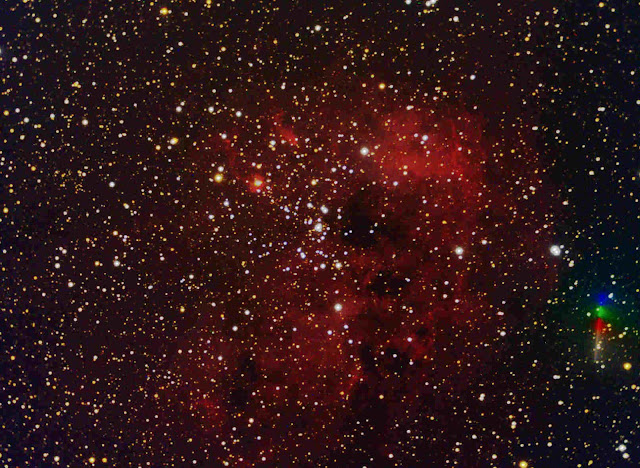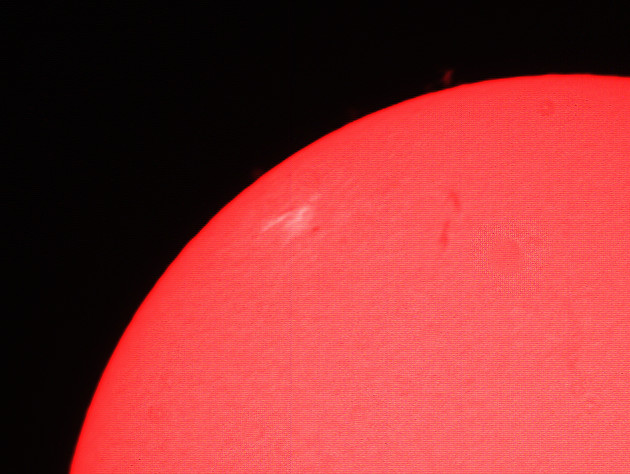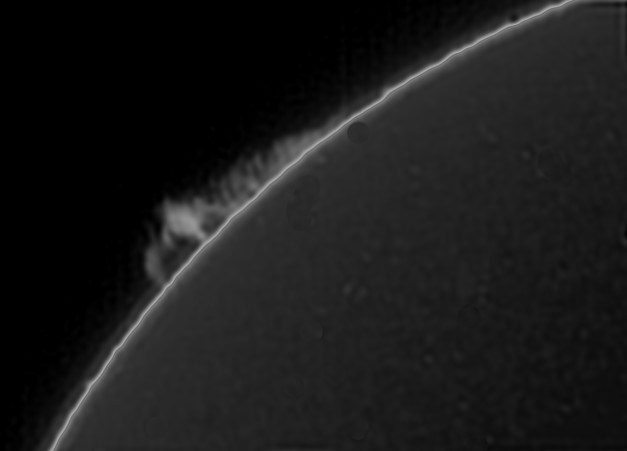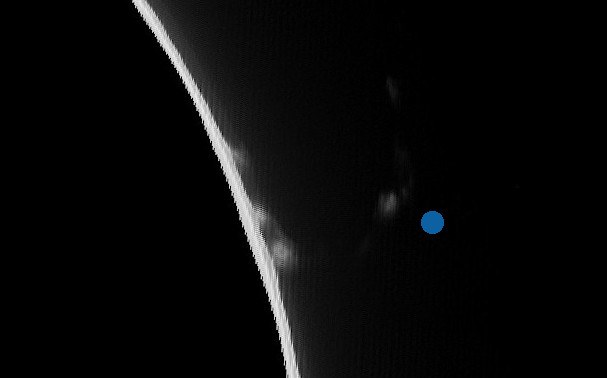The subject of this image is NGC1893, located in the constellation of Auriga. The NGC object is an open cluster of stars, but has a Hydrogen-alpha region associated with it called, apparently, IC410 and SH 2-236. In my image, the predominant red region is IC410/Sh 2-236. Separating the open cluster from the background stars is more difficult.
 |
| NGC1893. What's that on the right side of the image? |
So, what makes this image more interesting than usual? The story begins three nights before when I imaged the same object. However, I imaged at (binning of) 2x2 for the luminance channel, and 4x4 for the red, green, and blue channels. The idea was multiply the RGB channels by 2 to match the L channel, then combine like I usually do. Turns out, that's not possible. The image in 2x2 is 1663 pixels wide, while the 4x4 are 831 pixels wide. And never the twain shall meet. One lousy pixel off, and I had to throw the RGB channels away. Such is life. So, after finding this out, I re-shot the images, (LRG&B) again on the 8th. Turns out, that makes things more interesting. Lesson #1, don't shoot 2x2 and 4x4 and think they can be combined. In my experience, shooting stars with underlying or nearby nebulosity can be problematic; either the stars are over exposed, or it's extremely difficult to bring out the nebulosity. Or both. Bringing out the nebulosity was the case this time. Certainly not APOD quality, but probably as good as I can do under the circumstances. Now things start getting very interesting. Looking at the bottom right corner of the image, there is something that looks like a grey “wand” that changes to red, green, and finally blue. That really is a thing and it took me about a half day to find out what was going on. I figured it might be an asteroid moving across the field of view, since the entire run for shooting this image was about 2 ½ hours. I tried several web sites to try to determine what asteroid it could be, but to no avail. It turns out the at least one of the suggested web sites needed the coordinates of the center of the image to try to figure out what the moving object could be, so I tried my old friend ASTAP. In this case, it was ASTAP to the rescue. ASTAP can also figure out what comet of asteroid is in the image, so I downloaded the needed files and decided to try it. Turns out it wasn't an asteroid, but a comet. The line is comet C/2020M3 Atlas. So, why is it a line? The 1st hour of imaging was done in the L channel, hence the grey line. Then, 20 minutes each of red, green, and blue, which make up the remainder of the multicolored line. There you have it. Mystery solved, and I learned a method of identification of asteroids and comets in an image. (end of lesson #2) Below is the ASTAP plate solved image, showing what I found on ONE of the many L channel images. Notice the circle annotated D0 18. Another mystery and one with little information. As best I can find out, that refers to a Dolidze catalog, entry # 18, which, apparently is a catalog of open clusters (end of lesson #3). Who knew? (Well, I do now.)
 |
| ASTAP Plate solved image above. |



















































